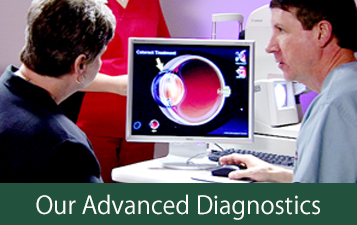PRELEX
PRELEX is a surgical procedure that uses the same successful techniques of modern cataract surgery. These surgical techniques have evolved and improved dramatically over the last 20 years. Cataract surgery is now the most common surgical procedure performed in medicine today.
The main difference between standard cataract surgery and PRELEX is that cataract surgery is primarily performed to remove a patient’s cataract that is obstructing and clouding their vision, while PRELEX is performed to minimize a person’s dependence on glasses or contact lenses.
PRELEX is for those who:
- want to be less dependent on glasses or contacts for far and near vision.
- are outside the corrective range of LASIK and other refractive procedures.
- may be showing signs of clouding in their natural lens even though this clouding is not yet interfering with vision.
- have no health issues affecting their eyes.
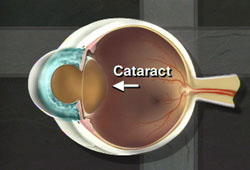
Cataracts are a part of the normal aging process and if a person lives long enough chances are they will develop cataracts.People who have PRELEX now will not have cataract surgery in the future.
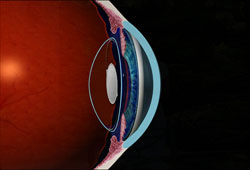
PRELEX corrects vision by replacing the eye’s natural lens, which has the wrong focusing power, with an artificial multifocal intra-ocular lens implant that has the correct focusing power for the eye. Having this multifocal lens implant creates a new “visual system” inside the eye, one that can provide the focusing power to see near, intermediate and far images with minimal dependence on corrective lenses. Monofocal lenses on the other hand, provide clear vision at only one point of focus.
Here are two eye charts to help illustrate the range of focus between monofocal lenses and multifocal lenses.The image on the far left is what a person would see at about 16 inches. On the far right is what they would see at about 12 feet.
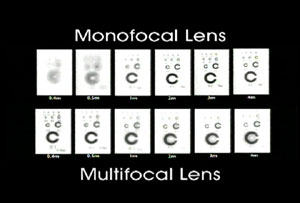
As you can see, looking through the monofocal lens, the near is blurry but as you get farther away, it becomes clear. While looking through the multifocal lens, the close, intermediate and far images are clear.
What to expect on surgery day:
The PRELEX procedure is performed on an outpatient basis. Only one eye will be treated at a time.After your eye is completely numbed with topical or local anesthesia, your eye’s natural lens will be gently vacuumed out through a tiny incision, about one eighth of an inch wide.
Next, the multifocal lens will be folded and inserted through the same micro-incision. It will then be unfolded and placed into the “capsular bag” that originally surrounded the natural lens. This incision is “self-sealing” and usually requires no stitches. It remains tightly closed by the natural outward pressure within the eye. This type of incision heals fast and provides a much more comfortable recuperation.
If your eye has pre-existing astigmatism, your surgeon may elect to make micro-incisions in the cornea to reduce your astigmatism. These are called LRIs or limbal relaxing incisions.
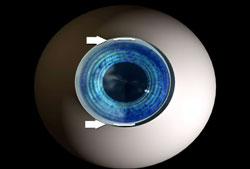
You will go home soon after the surgery and relax for the rest of the day. Everyone heals somewhat differently but many patients report improvement in their vision almost immediately after the procedure. Most patients return to their normal activities within a day or two.
Realistic expectations
It is extremely important to understand that with multifocal implants you are getting a new “visual system.” You’ve spent years learning how to use your visual system. It will naturally take time for your brain to adjust to a new visual system.
Following PRELEX, something patients notice right away is halos around objects. On the bottom center is an illustration drawn by a PRELEX patient representing the appearance of objects immediately after surgery. At the top right, is an illustration representing the appearance of the same objects after the visual cortex of her brain had begun to learn how to process the images. Notice that even the trees and buildings initially have a glow around them but over time the trees and buildings lose their glow and the halos around the car and street lights become less and less noticeable.
The goal of PRELEX surgery is to reduce or eliminate your dependence on glasses or contact lenses.However you may not achieve the results you desire and your doctor cannot guarantee your results even if you are considered an ideal candidate.
PRELEX uses a multifocal lens. This lens has been approved by the FDA for cataract surgery. The FDA has not reviewed this lens for indications other than cataract surgery. Therefore, using a multifocal lens is considered an “off-label” use of an approved medical device if you are younger than 60 and have not been diagnosed with a cataract. Doctors can use approved medical devices when they feel its use is in the best interest of their patients.
Alternatives to PRELEX

PRELEX is not the only surgical procedure designed to correct nearsightedness and farsightedness. To learn about other procedures go to the surgical and laser vision correction procedures section of our Web Site. If you would like to learn more about vision correction procedures from sources other than our practice, we encourage you to link to a number of Web sites we feel provide factual and up-to-date information. You may also choose to make an appointment, attend a seminar or request additional information to learn more about this exciting procedure.
We offer a number of finance options and affordable payment plans. It is easy to apply online and receive credit approval before you schedule an appointment.


